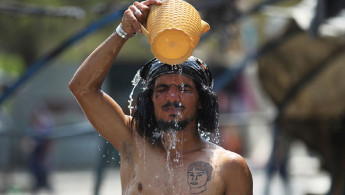The Iraq Report: Support for Iran evaporates as tempers and temperatures flare
Protests have once again ignited this week in Iraq as embattled Prime Minister Mustafa al-Kadhimi is accused of being no different to any of his predecessors over the past 17 years since the US-led invasion toppled the Baathist dictatorship in 2003.
The protests again led to deadly violence against demonstrators, and heavy-handed police tactics have led to calls for Kadhimi to resign, placing ever greater pressure on the Iraqi premier as he struggles to balance the interests of both neighbouring Iran and the United States in a country plagued by foreign meddling.
Iran’s pervasive presence in Iraq, and its use of predominantly Iraqi Shia proxies to crackdown on protesters since 2019, leading to the deaths of more than 500 demonstrators, has seen Iran’s popularity in Iraq plummet precipitously. Public anger, particularly amongst the Shia-majority southern governorates, has been aimed at Iran during demonstrations, blaming Tehran for fuelling Iraq’s kleptocracy, powerful militant factions, and undermining the Iraqi state, government, and religious institutions.
Protests reignite as PM faces calls to step down
Two Iraqi demonstrators were shot dead by plain-clothed police officers in Baghdad on Sunday, the first protest-link fatalities under the new prime minister, who had repeatedly promised justice for demonstrators killed by state and Iran-linked militia violence.
Protesters had taken to the streets in Baghdad after temperatures soared last Sunday to over 50 degrees Celsius, creating a greater demand for electricity-hungry air conditioning, causing the dilapidated and outdated Iraqi grid to shut down.
Tempers reached boiling point as temperatures soared, leading to several dozen protesters to gather at Tahrir Square in the centre of the capital. Police and security forces stationed there attempted to clear the site which triggered a clash between them and the demonstrators.
 |
One demonstrator died after suffering a gunshot wound to the neck and another had a tear gas canister intentionally fired into the back of his head |  |
One demonstrator died after suffering a gunshot wound to the neck and another had a tear gas canister fired into the back of his head, causing severe head trauma and killing him on site.
Firing tear gas canisters directly at protesters’ heads has been a favoured tactic of the Iraqi security forces since demonstrations first broke out in October last year. Amnesty International reported last year that the use of gas grenades as direct fire weapons to cause “gruesome deaths” could have been used to claim accidents despite the use of “less-than-lethal” weapons to control protests.
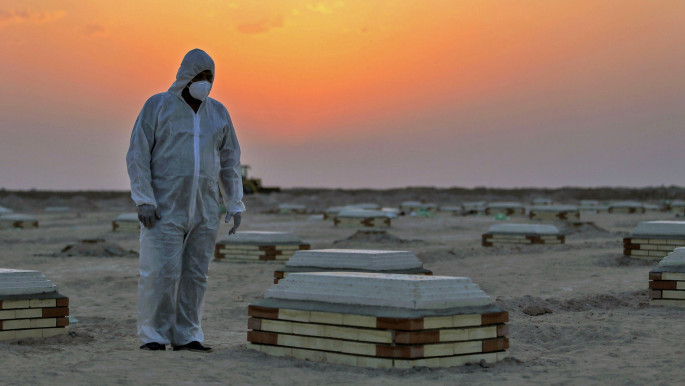 |
|
| The Iraq Report: Coronavirus worsens as Baghdad continues to grapple with lawless Iran-backed militias |
In a statement on Monday, the prime minister’s office acknowledged "unfortunate events" in protest squares, but insisted security forces had been instructed not to use violence unless absolutely necessary.
However, an AFP correspondent reported having seen the burnt remains of tent structures commonly used by protesters to provide shade and shelter during the hot Iraqi daytime and to maintain a continuous presence at demonstration sites.
The prime minister’s office did not comment further about the attacks, but said the government would carry out an investigation into Sunday's events to hold those responsible to account.
But online, activists were already comparing Kadhimi to his predecessor Adel Abdel Mahdi, who stepped down last year following months of protest-related violence.
Around 600 people were killed in that wave of rallies and another 30,000 wounded, many of them by military-grade tear gas canisters that can pierce human skulls if fired directly rather than lobbed in an arc to disperse crowds.
 |
"What is the difference between Kadhimi and Abdel Mahdi or any of the others over the past 17 years?” --Ahmed Yousef |
 |
There was virtually no accountability for those deaths under Abdel Mahdi, even as Kadhimi had pledged to publish a list of all the victims, carry out investigations, and listen to protester demandsm something he has yet to do.
But activists on Monday appeared to see little difference between the two, sharing a doctored image of Abdel Mahdi's handover to Kadhimi that depicted the outgoing premier pushing a collection of tear gas canisters and a rifle toward his successor.
“What is the difference between Kadhimi and Abdel Mahdi or any of the others over the past 17 years?” Ahmed Yousef told The New Arab.
“Everyone keeps promising us democracy, promising us accountability, promising us opportunity. Where is it? All I see are skulls shattered by gas canisters.”
While Kadhimi is ultimately responsible for the deaths of protesters as the country's top leader, experts have suggested that there is very little he can do as he is facing an Iraqi deep state.
When the United States removed Saddam Hussein’s Baathist dictatorship from power in 2003, it did not replace it with a functioning democracy, but a deeply unstable and divided political system that relied on a newly enthroned and disunited elite to provide the veneer of democracy without the actual substance.
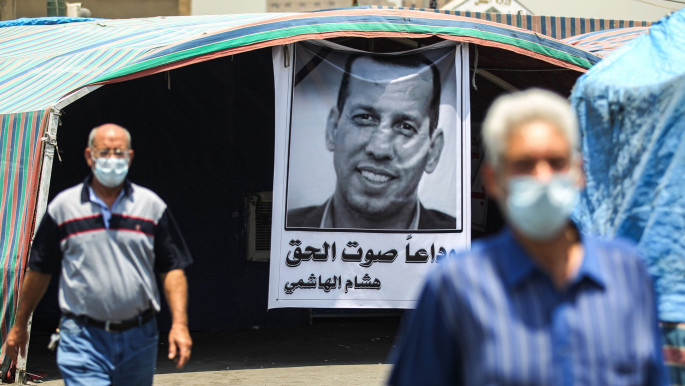 |
|
| The Iraq Report: Hisham al-Hashimi's killing sends a grim message to opponents of Shia militias |
These elites and quite often the militias loyal to them who also work for the interests of foreign powers, particularly Iran, have ensconced themselves into the various ministries of government, each taking a share of the state budget with cronyism ensuring an unfair distribution with the common Iraqi left out of the equation.
Without a political base via a popular mandate, Kadhimi does not stand a chance against Iraq’s deep state. As he was selected by the very parliamentary groups he is sometimes attempting to challenge, Kadhimi has no real power against his benefactors. A single vote of no confidence can end his fledgling career.
Support for Iran plummets amongst Iraqi public
Iranian popularity amongst Iraqis has taken a nosedive due to its perceived role in stamping out a popular protest movement that began in October last year, an academic study has shown.
Iran’s aid to “core support groups”, including violent Shia Islamist militias and political groups, many of whom have been implicated in the deaths of protesters, has seen its support evaporate amongst the largely Shia south, the report by the London School of Economics’ Middle East Centre said.
Despite the United States playing the central role in overthrowing the former Iraqi regime, it has been commonly accepted that it was in fact Iran that “won” the Iraq war.
 |
While Washington lost thousands of its soldiers and sank hundreds of billions into Iraq, it was Iran that emerged as the major influencer of Iraqi domestic and foreign policy |  |
While Washington lost thousands of its soldiers and sank hundreds of billions into Iraq, it was Iran that emerged as the major influencer of Iraqi domestic and foreign policy.
“Post 2003, Iran has shown greater aptitude than Western states for penetrating Iraqi politics and society, producing ‘smart power’ by manipulating the combination of identity politics, patronage networks, and coercion which have become prevalent in both,” the paper’s author, Jessica Watkins, argued.
“But Iranian interference has been a major source of grievance for Iraqis since the outbreak of the October 2019 popular protests, undermining the Islamic Republic’s non-coercive influence.”
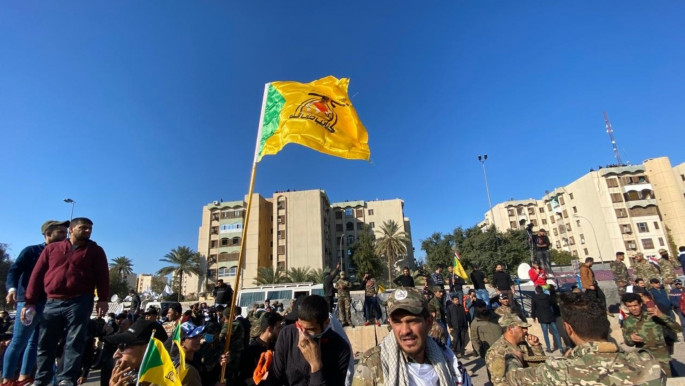 |
|
| The Iraq Report: Pro-Iran militias reassert dominance over Mustafa al-Kadhimi |
Approval ratings for Iran reached a high of 86 percent in 2015 during the fight against the Islamic State group.
This precipitous decline in Iran’s popularity shows that its soft power has now been reoriented to continue more overt support for the political, religious, and security elite that it has fostered over the years, which has made Tehran lose support amongst the Shia population.
However, this will be a risky long-term strategy for Iran. Ultimately, the electoral power base of its proxies in Iraq come from the very same Shia population, particularly in southern governorates. If Iran-sponsored violence continues to alienate them, then they will ultimately feel as disenfranchised as the Sunni Arab population already does.
This will lead to a broader disengagement from the political process, with even the last election showing a dismal 45 percent turnout. Should this trend continue, even the veneer of democracy in Iraq could disappear once and for all, and a continued failure of governance leading to a lack of services, economic opportunities, and political representation may very well lead to civil war.
The Iraq Report is a regular feature at The New Arab.
Click below to see the full archive.
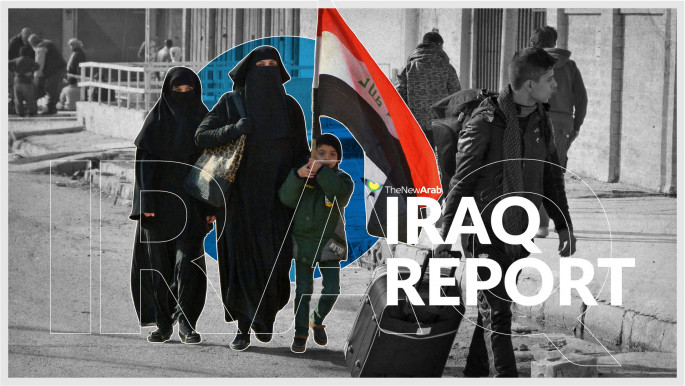 |
|
